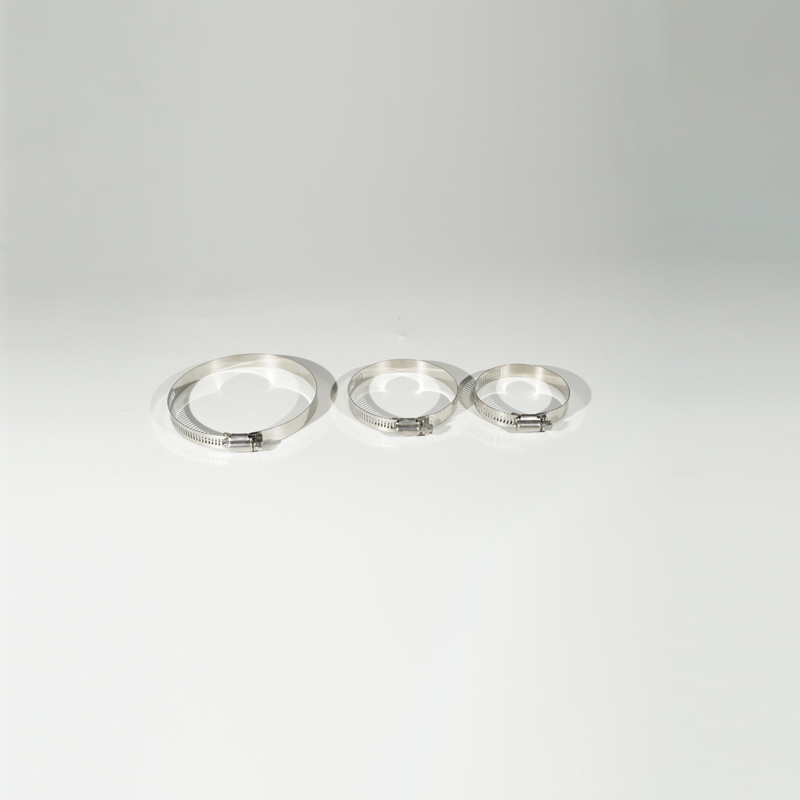- Phone:+86-17331948172 +86-0319-8862898
- E-mail: inquiry@puxingclamp.com
Dec . 07, 2024 11:04 Back to list
hose clamp 100mm
Understanding Hose Clamps The Importance of 100mm Hose Clamps
When it comes to fluid transportation, securing hoses and pipes is a fundamental task across various industries. One of the most essential tools in achieving this is the hose clamp. Among the many sizes available, the 100mm hose clamp stands out for its versatility and widespread application. This article delves into the significance of hose clamps, focusing specifically on the 100mm variety, their construction, applications, and tips for optimal use.
What is a Hose Clamp?
A hose clamp is a mechanical device used to hold a hose onto a fitting or ensure a tight seal between two components. Made from various materials like stainless steel, plastic, or galvanized steel, these clamps can secure hoses of different diameters reliably. The design typically includes a band that encircles the hose, a mechanism for tightening—often a screw or a worm gear—and a housing for the tightening mechanism.
The 100mm Hose Clamp Size and Versatility
The 100mm hose clamp refers to a clamp that can accommodate hoses with a diameter of up to 100mm (approximately 3.94 inches). This size is particularly popular since it caters to various applications in automotive, plumbing, agricultural, and industrial settings. In automotive applications, for instance, a 100mm hose clamp may be used to secure the connection between a radiator hose and the engine, preventing coolant leaks that could lead to overheating.
In plumbing, these clamps are instrumental in securing pipes in a system and ensuring water tightness. The agricultural sector also leverages 100mm hose clamps in irrigation systems, where hoses often face pressure changes and the need for dependable connection points. Given their adaptability, it's no wonder that the 100mm size is a favorite among engineers and DIY enthusiasts alike.
Construction and Material Considerations
The effectiveness of a hose clamp depends largely on its material and construction quality. Stainless steel is a leading choice due to its resistance to rust and corrosion, enabling longevity even in harsh environments. Galvanized steel is another option, often used in settings without high corrosion exposure.
In contrast, plastic hose clamps are lighter and less expensive but may not offer the necessary strength or resistance for high-pressure applications. When choosing a clamp, it is vital to consider the environmental conditions and the nature of the fluids being transported.
hose clamp 100mm

Proper Installation for Optimal Performance
Installing a hose clamp correctly is essential for optimal performance. Here are some tips for ensuring a secure and effective installation
1. Select the Right Size Ensure the clamp is suitable for the hose diameter. A 100mm clamp is ideal for hoses close to that size but may also fit slightly larger hoses depending on the design.
2. Clean the Surface Before securing the clamp, clean the hose fitting to remove any debris, dirt, or old sealant that could interfere with a proper seal.
3. Position the Clamp Place the hose clamp at the end of the hose where it connects to the fitting. This positioning maximizes the clamp’s grip and minimizes the risk of leaks.
4. Tighten Evenly Use a screwdriver or socket wrench to tighten the clamp evenly. It’s vital not to overtighten, as this could damage the hose or fitting.
5. Inspect Regularly Once installed, regularly check the clamp for tightness, especially in high-vibration environments, to ensure ongoing effectiveness.
Conclusion
In summary, the 100mm hose clamp plays an indispensable role in ensuring the integrity of fluid transfer systems across various fields. Understanding the importance of these clamps, their proper usage, and the materials they come in can lead to significant improvements in both efficiency and safety in any application. Whether you're a professional engineer, mechanic, or a DIY enthusiast, investing in high-quality hose clamps like the 100mm variety can save time, resources, and potential headaches in the long run. By prioritizing proper installation and maintenance, you can ensure a leak-free and secure hose connection, tailored to your specific needs.
-
Large Stainless Steel Adjustable American Type Hose Clamp - Hebei Pux Alloy Technology Co., Ltd.
NewsAug.06,2025
-
High Quality Steel Midsole - EN Standard for Safety Shoes
NewsAug.06,2025
-
Large Stainless Steel Adjustable American Type Hose Clamp - Hebei Pux Alloy Technology|[Corrosion Resistance]&[Adjustable Design]
NewsAug.06,2025
-
Large Stainless Steel Adjustable American Type Hose Clamp - Hebei Pux Alloy Technology Co., Ltd
NewsAug.05,2025
-
Large Stainless Steel Hose Clamp - Hebei Pux Alloy Technology Co., Ltd | Corrosion Resistance, Adjustable Design
NewsAug.05,2025
-
Large Stainless Steel Adjustable American Type Hose Clamp - Hebei Pux Alloy Technology Co., Ltd | Corrosion Resistance&Adjustable Design
NewsAug.05,2025




